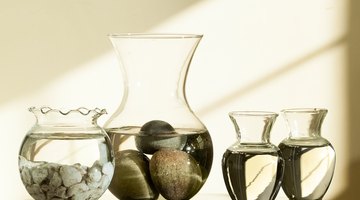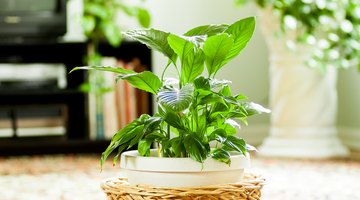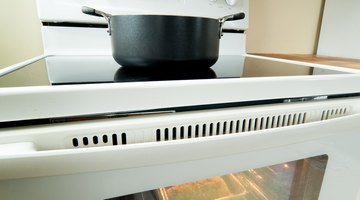How to Add Humidity Inside a House Without a Humidifier
Dry air in your home is not only uncomfortable, but it can cause physical issues such as cracked lips, dry nasal passages and dry skin. The fastest way to add humidity to your home is with the use of a humidifier, but they can either add too much humidity or increase your electric bill.

To add humidity to your home without the use of a humidifier, there are several inexpensive and natural measures you can take.
Things You Will Need
- Pots and pans
- Glass bowls
- Marbles or stones
- Indoor drying rack
- House plants
- Fish tank
- Indoor fountain
-
Place a pot of water on your radiator, wood stove, register or baseboard heater. As the heater heats up, the water will evaporate into the air, adding moisture to your home. If your heater is narrow, as in the case of a baseboard heater, a narrow dish such as a bed pan will work nicely.
-
Set pots of water near the heat source, or simply leave water out on counter tops or in front of sunny windows. Add a decorative touch to the water by putting water in glass bowls and adding colored marbles or stones.
-
Dry your laundry indoors, without using the dryer. Hang towels and other linens over doorways or on the back of chairs, or purchase an indoor clothes drying rack. You will add moisture to your indoor air and save money by not using the dryer.
-
Add some houseplants to your home. Not only will you be moisture to the air simply by watering the plants, but plants naturally add moisture to the air all by themselves. Plants recycle water by a process known as "transpiration." The United States Geological Survey explains that transpiration occurs as moisture travels through plants from the roots to pores on the bottom side of the leaves. Moisture is released through the pores and into the atmosphere. The more plants you have in your home, the more humidity you will have.
-
Cook with the lids off. When you're boiling water or vegetables, leave the lids off so that the excess moisture can infiltrate the air.
-
Leave a pot of water on top of the stove when you have something in the oven. The top of the stove naturally heats up slightly when you are baking, which will help the water in the pot evaporate.
-
Fill a crock pot with water and keep it on low with the lid off. This is an especially good measure to take when you want added humidity during the night hours, and using a crock pot is much more energy efficient than boiling a pan of water on a stove top.
-
Take your shower with the bathroom door open. Not only will this help humidify your home, it will help prevent mildew in the bathroom.
-
Get some fish. A fish tank with the lid partially open will also increase the air's moisture content.
-
Buy an indoor fountain. Not only will the sound of the water help you relax, the humidity will keep you skin and membranes moist. Indoor fountains are especially beneficial in bedrooms, as they add to overall relaxation.










Warning
Some suggest venting your dryer into your home, rather than outside. Unless you purchase a home venting kit, which prevents excess moisture from entering the room anyway, this is not a great idea. Dust particles, pet hair and fabric softener fibers can enter the air and irritate allergies.
The Drip Cap
- Dry air in your home is not only uncomfortable, but it can cause physical issues such as cracked lips, dry nasal passages and dry skin.
- As the heater heats up, the water will evaporate into the air, adding moisture to your home.
- Set pots of water near the heat source, or simply leave water out on counter tops or in front of sunny windows.
- Dry your laundry indoors, without using the dryer.
- Plants recycle water by a process known as "transpiration." The top of the stove naturally heats up slightly when you are baking, which will help the water in the pot evaporate.
References
Writer Bio
A certified nutritionist who majored in health, fitness and nutrition, Traci Vandermark has been writing articles in her specialty fields since 1998. Her articles have appeared both online and in print for publications such as Simple Abundance, "Catskill Country Magazine," "Birds and Blooms," "Cappers" and "Country Discoveries."
Photo Credits
- Michael Price/Demand Media
- Michael Price/Demand Media
- Michael Price/Demand Media
- Michael Price/Demand Media
- Michael Price/Demand Media
- Michael Price/Demand Media
- Michael Price/Demand Media
- Michael Price/Demand Media
- Michael Price/Demand Media
- Michael Price/Demand Media
- Michael Price/Demand Media
- Michael Price/Demand Media
More Articles



